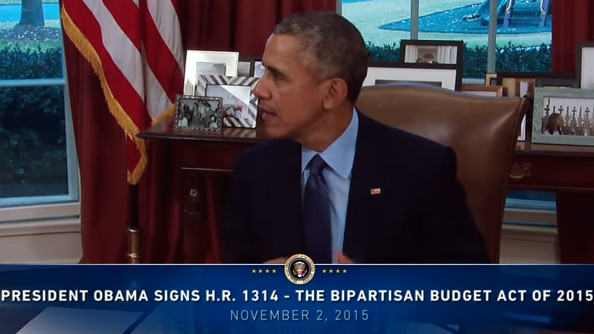With an amendment to the new budget signed into law earlier this week by President Obama, OSHA is poised to make up for lost time in its ability to level fines that will punish and deter violators. A provision in the new budget called the Federal Civil Penalties Inflation Adjustment Act Improvements Act of 2015 will allow OSHA to increase the current maximum limit for fines by about 80%, and to then annually increase the limit on fines to keep pace with inflation. This move seems designed to compensate for the “freeze” on financial penalty increases that had been in place for the last 25 years. (OSHA had previously been limited by the Federal Civil Penalties Inflation Adjustment Act of 1990 which prevented it from increasing penalties.)
According to the act, the new fine increases must take place by August 1 of next year, though they can be implemented sooner if OSHA chooses.
The new act does include a potential exception to the increases, noting that OSHA is allowed to forego following the enhanced financial guidelines if “increasing the civil monetary penalty by the otherwise required amount will have a negative economic impact [on America]” or “the social costs of increasing the civil monetary penalty by the otherwise required amount outweigh the benefits.” Obviously, this language will give OSHA considerable latitude to apply these fines as they see fit.
With recent pushback against OSHA’s attempts to strengthen everything from enforcement protocols on joint-employer worksites to PELs for silica dust, the approval of this massive increase in penalties comes as a surprise to some. The Wall Street Journal went as far as to hint that legislators may not have even been aware of the new act, calling it “little-noticed” and reporting that many in the industry “were caught by surprise by the new mandate.” Others characterized the legislation a “Trojan horse” snuck into the budget.
On the other hand, many industry observers saw good evidence in preceding months and years that OSHA very much desired to increase fines, and was looking for a way to do so. For example, in May of this year, after OSHA issued fines of $99,000 — the maximum allowed under the law — for a gas leak at a DuPont plant that killed four people, OSHA head Dr. David Michaels expressed his frustration to the press in no uncertain terms, calling the amount “petty cash” and saying “It’s painful for us. . . to see that the fine is only $99,000.” In testimony just last month before the U.S. House of Representatives’ Subcommittee on Workforce Protections, Dr. Michaels called limits on financial penalties “the most serious obstacle to effective OSHA enforcement of the law.”
This increase to financial penalty limits will obviously be an important issue for everyone in the EHS space to watch in the weeks and months going forward. Unknowns include:
- Will OSHA wait until the August 1, 2016 deadline to increase maximum penalties, or will it do so (much?) sooner?
- Will OSHA inspectors tend to cite at or near the new maximum limits in most cases?
- Now that “the cat is out of the bag,” will any industry entities opposed to expanded regulation attempt to rally against this new law?
Clearly, we are at the beginning of a very large, industry-wide change with the potential to impact all American businesses. Though much surrounding the rollout of this new act may still be unknown, keeping workplaces safe and compliant is poised to be more important (and valuable) than ever before. Stay tuned!







